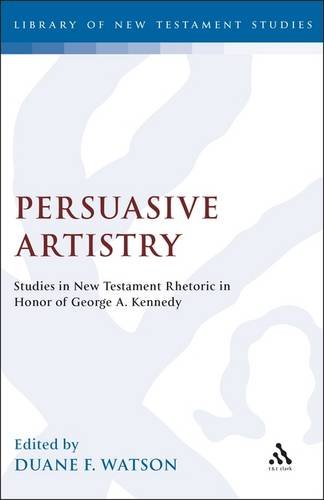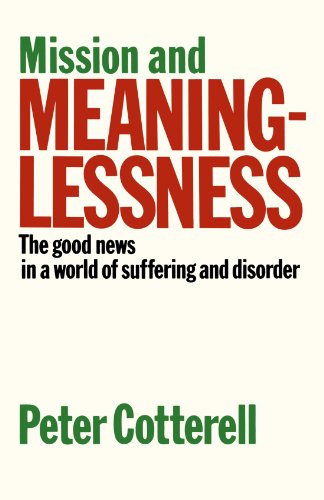The Romans Debate (revised and expanded edition)
Written by Karl P. Donfried (ed.) Reviewed By Edward AdamsThe first edition of The Romans Debate, published in 1977, brought together key essays, written over the previous 30 years, on the occasion and purpose of Romans. The ‘Romans debate’ has advanced somewhat since 1977, and to account for the more recent developments, a revised edition has been produced, adding a further 13 essays to the original ten. All the new articles appear in some form in other publications. Dunn’s essays, for instance, are taken from the introductory section of his commentary on Romans 1–8 (Word).
The volume is divided into two parts. In Part One we are given the essays of the 1977 edition. T.W. Manson, G. Bornkamm, J. Jervell and R.J. Karris argue that Romans is to be understood as arising out of Paul’s own circumstances. K.P. Donfried, W. Wiefel and, to a lesser degree, G. Klein maintain that it was written to meet the specific needs of the churches in Rome. Donfried’s (‘False Presuppositions in the Study of Romans’) and Wiefel’s are important essays. Dissenting voices the first time round, their contention that Romans is addressed to a particular Christian community in a particular social-historical situation (Donfried on methodological grounds, Wiefel on the basis of what can be known about early Roman Christianity) is now the scholarly consensus. In the final two essays of the section, Wuellner discusses the rhetoric of Romans, and M.L. Stirewelt, in a more general piece, examines the epistolary category, the letter-essay.
Part Two presents the additional material and is sub-divided into three sections. Section A treats ‘Historical and Sociological Factors’. Essays by F.F. Bruce, A.J.M. Wedderburn and Peter Stuhlmacher discuss the reason(s) for Romans. Bruce’s contribution is a model of balanced scholarship. He argues that Paul, while dictating the letter, had three prospective visits in mind, to Rome, Spain and Jerusalem and each of these is a factor in the composition of the epistle. Francis Watson’s and Peter Lampe’s essays focus on the situation in Rome. Watson’s chapter is taken from his important monograph, Paul, Judaism and the Gentiles. His portrayal of Roman Christianity has a number of valuable insights, but most will question his proposal that there were two separate and mutually hostile congregations in Rome. Lampe, too, argues for the divided nature of the Roman Christian community, but in terms of scattered house-churches lacking in central co-ordination. In an informative essay, abridged from his book Die stadtrömischen Christen in den ersten beiden Jahrhunderten, he offers a social profile of Christianity in Rome based on an analysis of the names of Romans 16.
Section B deals with ‘The Structure and Rhetoric of Romans’. The section opens on a cautionary note sounded by J.D.G. Dunn. He doubts whether the recent concern with the rhetorical structure of Romans has contributed much to our understanding of the epistle. For Dunn, the coherence of Romans lies in its theology rather than its frame. W.S. Campbell argues that the coherence of the letter is due both to theology and structure, with Romans 3 as the theological and structural centrepoint. Rhetorical analyses of Romans are offered by R. Jewett and D.A. Aune. Jewett sees the epistle as an expression of demonstrative rhetoric, the aim of which is to elicit the co-operation of the Roman churches in Paul’s missionary activities. Aune views Romans as an example of logos protreptikos (speech of exhortation), written by Paul to convince the Roman Christians of the truth of his version of the gospel.
Section C is a collection of four essays on ‘The Theology of Romans’. J.D.G. Dunn contends that a reappraisal of Romans, and in particular, Paul’s treatment of the law in the epistle, has been necessitated by ‘the new perspective on Paul’. In Dunn’s view, Paul is reacting against the law as ‘misunderstood by a misplaced emphasis on boundary-marking ritual’ and not to the law as a means of earning salvation. Lloyd Gaston, like Dunn, follows the perspective of E.P. Sanders. Gaston is concerned with the nature of Paul’s attack on Judaism in the epistle. He argues that Israel’s misstep as far as Paul was concerned was her failure to recognize that the goal of the Torah was the extension of God’s righteousness to the Gentiles. The concluding essays by J.C. Beker and Peter Stuhlmacher address the question of whether there is an overriding theological theme in Romans. Beker places emphasis on the faithfulness of God, by which, he claims, Paul is able to maintain the priority of Israel and the equality of Jew and Gentile in Christ. For Stuhlmacher, the theme of Romans is the righteousness of God, in and through Christ.
As an update on the continuing discussion, the book is to be welcomed. Donfried’s introductions, to the 1977 and 1991 editions, are especially helpful, summarizing the essays, offering criticisms, identifying the important issues, and guiding the reader through the intricacies of the debate(s). Like its predecessor, this volume will quickly establish its usefulness and secure a place as a standard for the study of Romans.
Edward Adams
King’s College, London







